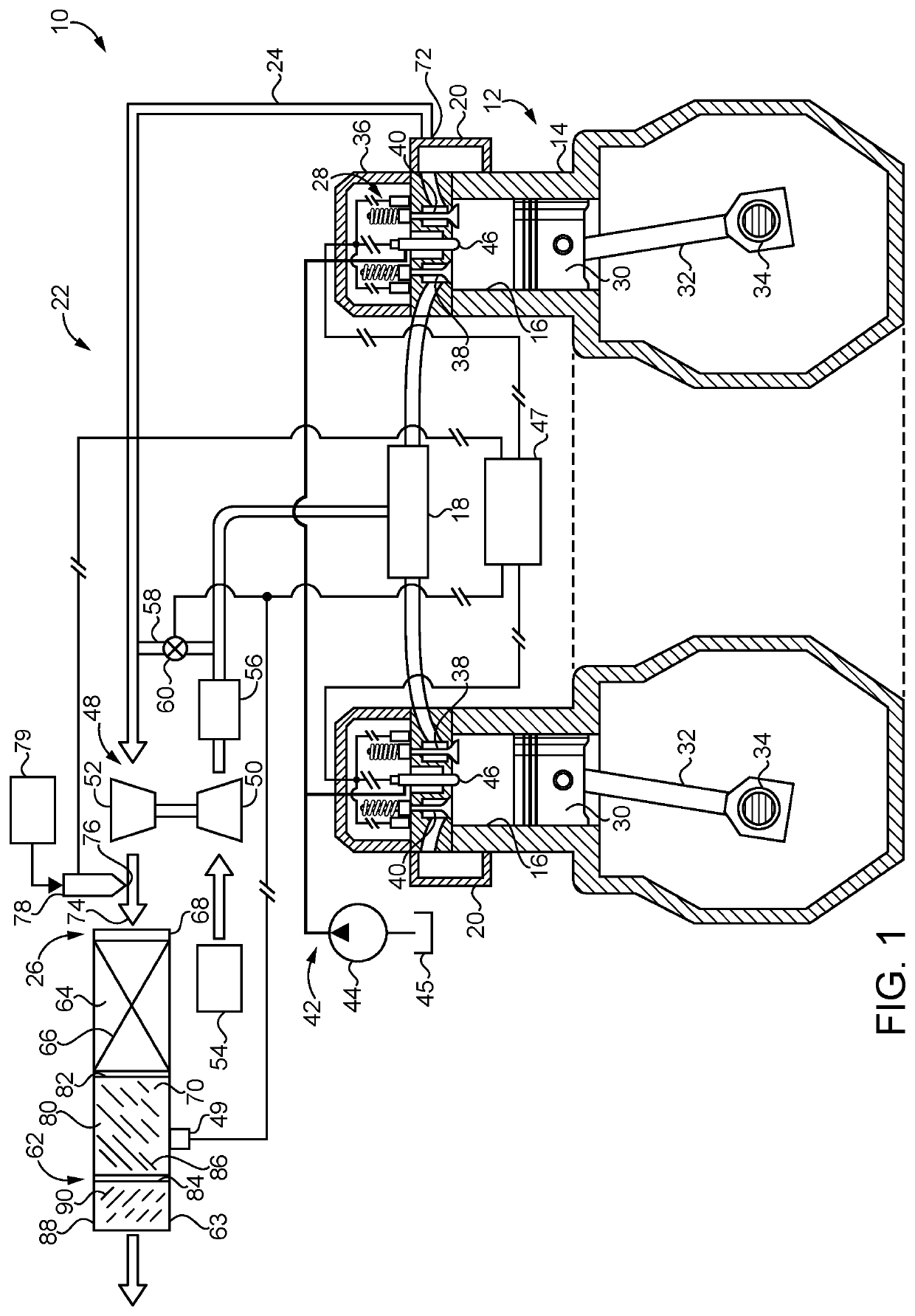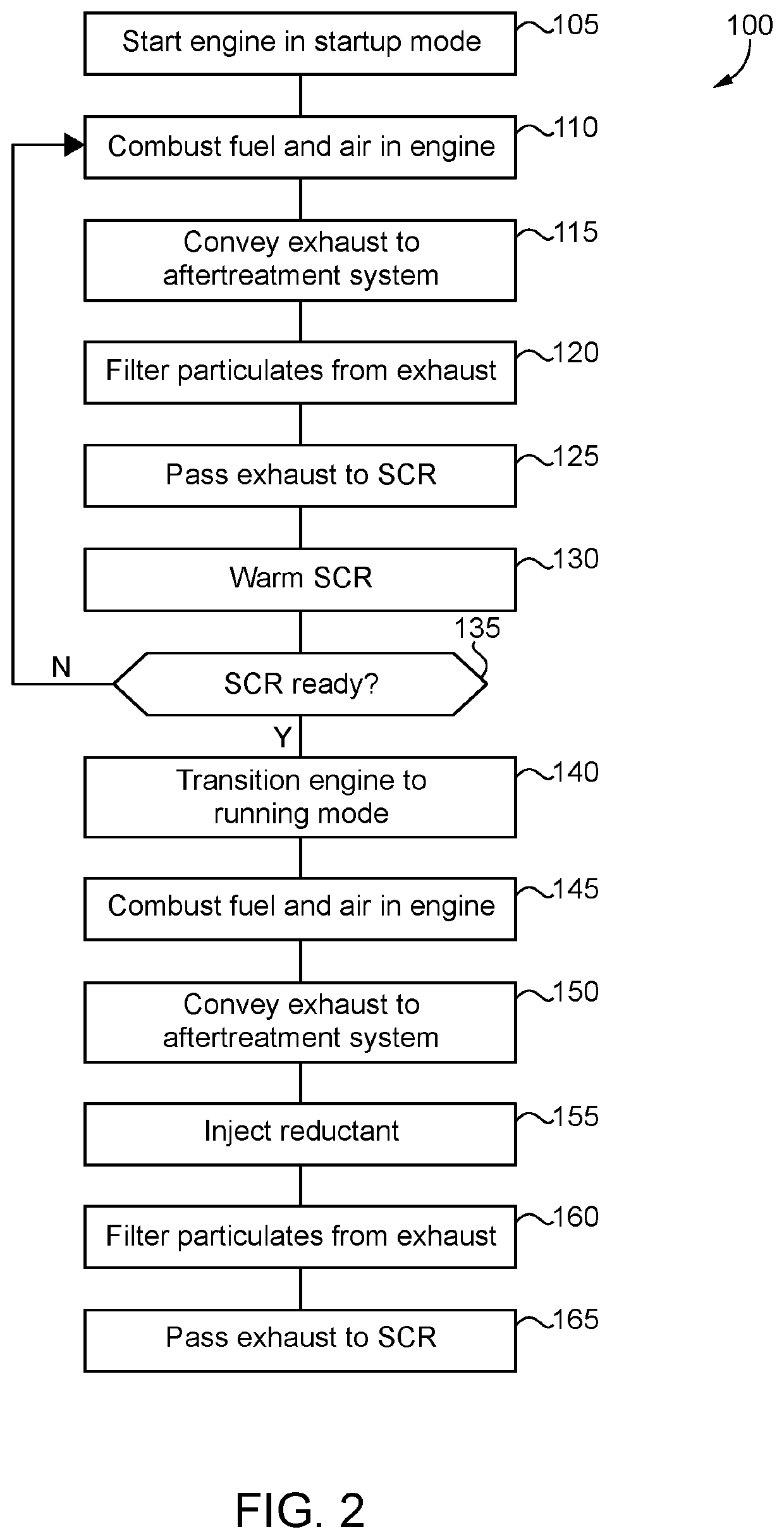ENGINE SYSTEM AND OPERATING STRATEGY FOR SELECTIVE IN SITU AND EX SITU LIMITING OF NOx PRODUCTION
a technology of in situ and ex situ limiting and engine system, applied in the direction of electrical control, exhaust treatment electric control, separation process, etc., can solve the problems of large additional cost, complex overall system, and general need for active regeneration to achieve the effect of limiting nox output and reducing nox in the exhaus
- Summary
- Abstract
- Description
- Claims
- Application Information
AI Technical Summary
Benefits of technology
Problems solved by technology
Method used
Image
Examples
Embodiment Construction
[0010]Referring to FIG. 1, there is shown a compression ignition internal combustion engine system 10, according to one embodiment. Internal combustion engine system 10 (hereinafter “engine system 10”) may operate on a liquid fuel, such as a diesel distillate liquid fuel, and includes an engine 12 having a cylinder block 14 with a plurality of combustion cylinders 16 formed therein. Engine 12 further includes an intake manifold 18 and an exhaust manifold 20. Combustion cylinders 16 may include any number, arranged in any suitable configuration. A plurality of pistons 30 are positioned one within each of combustion cylinders 16 and are movable, in a four-stroke engine cycle, between a bottom dead center position and a top dead center position to increase a pressure within a corresponding one of combustion cylinders 16 to an autoignition threshold. Each of pistons 30 is coupled with a connecting rod 32 that rotates a crankshaft 34, in a generally conventional manner. Engine 12 further...
PUM
 Login to View More
Login to View More Abstract
Description
Claims
Application Information
 Login to View More
Login to View More - R&D
- Intellectual Property
- Life Sciences
- Materials
- Tech Scout
- Unparalleled Data Quality
- Higher Quality Content
- 60% Fewer Hallucinations
Browse by: Latest US Patents, China's latest patents, Technical Efficacy Thesaurus, Application Domain, Technology Topic, Popular Technical Reports.
© 2025 PatSnap. All rights reserved.Legal|Privacy policy|Modern Slavery Act Transparency Statement|Sitemap|About US| Contact US: help@patsnap.com


